Does the Fire Extinguisher Service Company you are Trusting With your Fire Safety needs hold a Valid Illinois State License??Who needs to be licensed? The Company and its service technicians need to be licensed. Besides any high quality service company would keep their state license up to date. TITLE 41: FIRE PROTECTION (click to read in full) CHAPTER I: OFFICE OF THE STATE FIRE MARSHAL PART 280 FIRE EQUIPMENT ADMINISTRATIVE PROCEDURES SECTION 280.10 DEFINITIONS "Fire Equipment Distributor". Any person, company or corporation that services, recharges, hydro-tests, inspects, installs, maintains, alters, repairs or replaces fire suppression devices or systems, other than water sprinklers. The term does not include a person, company or corporation that only hydro-tests cylinders that store extinguishment materials. **You can easily check here at this link to be sure you are choosing a valid Company in Illinois
1 Comment
Fire Safety Tips To Think AboutFire is more sly and less discriminating than a thief. It can travel (spread) through very small openings and concealed spaces to reach other parts of a building, deprive occupants of a life supporting environment, and cause partial to total destruction of property.
Some have an attitude in this country that "fire won’t happen to me," that "it is someone else’s problem." Americans also place a lot of blind faith in their local fire department to save them and their property from any fire that may occur, and believe insurance will cover the rest. Reality is very different. Planning now will determine how quickly your company can get back to business after a fire. Did you know that around 80,000 serious workplace fires occur every year in the United States? Your location, industry, and facility size can greatly affect your choice of fire protection equipment, so find out exactly what you need before you invest. How do you find out? First, call your local fire department and schedule an appointment for the Fire Inspector to visit your business and they will tell you exactly what type of fire protection equipment you need. Next, call EFR Fire & Safety with your Fire Inspection report in hand and we will deliver your equipment directly to your business. Fire Safety Training EFR FIRE & SAFETY PROVIDES TRAINING FOR COMPANIES AND EMPLOYEES More important than the preservation of property and machines, is safeguarding the lives of staff and visitors. Life safety must always come first. Management must ensure that employees know what to do in the event of a fire. Instruct employees on how to turn in an alarm (phone, manual pull station, etc.). This is the first action that should be taken upon discovery of a fire. If the alarm is not sounded first, the lives of co-workers and visitors are needlessly endangered.
DO FIRE EXTINGUISHERS EVER EXPIRE?Yes, Fire extinguishers expire. Over time, the seal on the neck will weaken and allow compressed gas to escape. Extinguishers that have lost much of their pressure will not operate. Summer is Right Around The Corner bE pREPAREDHOORAY! Soon we will be enjoying the warm weather again in Illinois. Seriously, no one gets excited about checking their fire extinguishers. In all reality we are more excited about firing up the grill, getting our summer cottages open, airing out the RV, launching the boat, tuning up the lawn mower, lighting up the bonfires or finally getting out our favorite outdoor gear.
Fire safety may not be the first thing on our minds, but I hope this blog post helps you remember to include it in your plans of summer fun preparation. If checking your fire extinguishers and smoke alarms is not something you regularly do and you own a Kidde fire extinguisher, the first thing you need to do is check this RECALL LIST and be sure to get a new unit. More than 4.6 Million Kidde fire extinguishers were recalled in 2015. You may have one and didn't even know about it. These Fire Extinguishers fail to discharge and that is dangerous. If you would like an industrial grade fire extinguisher that is capable of covering a larger fire, more likely to put out the fire endangering your family and any valuable property the Industrial Grade Fire Extinguishers we carry are ideal. The Kidde home extinguishers are not refillable, but ours are made to be recharged rather than disposed of after one use, contact EFR Fire & Safety and we can help you determine which extinguisher will fit your needs. The following is a basic inspection that you can do yourself, but if you feel more confident with a licensed fire extinguisher technician inspecting your fire extinguishers, we welcome you to bring it into our shop once a year and we can do a full inspection for you. Simply call or fill out a request for service form. Be Prepared by taking the time to learn how to use your fire extinguisher and also teach your family. Checklist for Home Fire Extinguisher Monthly 1. Ensure accessibility. Make sure the extinguisher is in its proper spot, visible and easy to access. 2. Inspect the seals. Look over the tamper and safety seals to make sure they are intact. 3. Check the pressure. If your fire extinguisher has a pressure gauge, be sure that the gauge’s needle indicates proper pressure. If the fire extinguisher has a test indicator, press it to make sure the pressure reading is within the correct range. 4. Look for damage. Visible signs of damage, such as corrosion, leakage or a clogged nozzle, may mean it’s time to replace the extinguisher. How has the fire extinguisher evolved over the years?HISTORICAL HIGHLIGHTS A primitive hand pump for directing water at a fire was invented by Ctesibius of Alexandria about 200 BCE, and similar devices were employed during the Middle Ages. In the early 1700′s, devices created independently by English chemists Ambrose Godfrey and French C. Hoppfer used explosive charges to disperse fire-suppressing solutions. English inventor Capt. George Manby introduced a handheld fire extinguisher—a three-gallon tank containing a pressurized solution of potassium carbonate—in 1817. Modern incarnations employing a variety of chemical solutions are essentially modifications of Manby’s design. COMPLETE HISTORY The first fire extinguisher of which there is any record was patented in England in 1723 by Ambrose Godfrey, a celebrated chemist at that time. It consisted of a cask of fire-extinguishing liquid containing a pewter chamber of gunpowder. This was connected with a system of fuses which were ignited, exploding the gunpowder and scattering the solution. This device was probably used to a limited extent, as Bradley's Weekly Messenger for November 7, 1729, refers to its efficiency in stopping a fire in London. The modern fire extinguisher was invented by British Captain George William Manby in 1818; it consisted of a copper vessel of 3 gallons (13.6 liters) of pearl ash (potassium carbonate) solution contained within compressed air. The soda-acid extinguisher was first patented in 1866 by Francois Carlier of France, which mixed a solution of water and sodium bicarbonate with tartaric acid, producing the propellant CO2 gas. A soda-acid extinguisher was patented in the U.S. in 1881 by Almon M. Granger. His extinguisher used the reaction between sodium bicarbonate solution and sulfuric acid to expel pressurized water onto a fire. A vial of concentrated sulfuric acid was suspended in the cylinder. Depending on the type of extinguisher, the vial of acid could be broken in one of two ways. One used a plunger to break the acid vial, while the second released a lead stopple that held the vial closed. Once the acid was mixed with the bicarbonate solution, carbon dioxide gas was expelled and thereby pressurized the water. The pressurized water was forced from the canister through a nozzle or short length of hose. The cartridge-operated extinguisher was invented by Read & Campbell of England in 1881, which used water or water-based solutions. They later invented a carbon tetrachloride model called the "Petrolex" which was marketed toward automotive use. The chemical foam extinguisher was invented in 1904 by Aleksandr Loran in Russia, based on his previous invention of fire fighting foam. Loran first used it to extinguish a pan of burning naphtha. It worked and looked similar to the soda-acid type, but the inner parts were slightly different. The main tank contained a solution of sodium bicarbonate in water, whilst the inner container (somewhat larger than the equivalent in a soda-acid unit) contained a solution of aluminium sulphate. When the solutions were mixed, usually by inverting the unit, the two liquids reacted to create a frothy foam, and carbon dioxide gas. The gas expelled the foam in the form of a jet. Although liquorice-root extracts and similar compounds were used as additives (stabilizing the foam by reinforcing the bubble-walls), there was no "foam compound" in these units. The foam was a combination of the products of the chemical reactions: sodium and aluminium salt-gels inflated by the carbon dioxide. Because of this, the foam was discharged directly from the unit, with no need for an aspirating branchpipe (as in newer mechanical foam types). Special versions were made for rough service, and vehicle mounting, known as apparatus of fire department types. Key features were a screw-down stopper that kept the liquids from mixing until it was manually opened, carrying straps, a longer hose, and a shut-off nozzle. Fire department types were often private label versions of major brands, sold by apparatus manufacturers to match their vehicles. Examples are Pirsch, Ward LaFrance, Mack, Seagrave, etc. These types are some of the most collectible extinguishers as they cross into both the apparatus restoration and fire extinguisher areas of interest. In 1910, The Pyrene Manufacturing Company of Delaware filed a patent for using carbon tetrachloride (CTC, or CCl4) to extinguish fires. The liquid vaporized and extinguished the flames by inhibiting the chemical chain reaction of the combustion process (it was an early 20th-century presupposition that the fire suppression ability of carbon tetrachloride relied on oxygen removal). In 1911, they patented a small, portable extinguisher that used the chemical. This consisted of a brass or chrome container with an integrated handpump, which was used to expel a jet of liquid towards the fire. It was usually of 1 imperial quart (1.1 l) or 1 imperial pint (0.57 l) capacity but was also available in up to 2 imperial gallons (9.1 l) size. As the container was unpressurized, it could be refilled after use through a filling plug with a fresh supply of CTC. Another type of carbon tetrachloride extinguisher was the fire grenade. This consisted of a glass sphere filled with CTC, that was intended to be hurled at the base of a fire (early ones used salt-water, but CTC was more effective). Carbon tetrachloride was suitable for liquid and electrical fires and the extinguishers were fitted to motor vehicles. Carbon tetrachloride extinguishers were withdrawn in the 1950s because of the chemical's toxicity - exposure to high concentrations damages the nervous system and internal organs. Additionally, when used on a fire, the heat can convert CTC to phosgene gas, formerly used as a chemical weapon. In the 1940s, Germany invented the liquid chlorobromomethane (CBM) for use in aircraft. It was more effective and slightly less toxic than carbon tetrachloride and was used until 1969. Methyl bromide was discovered as an extinguishing agent in the 1920s and was used extensively in Europe. It is a low-pressure gas that works by inhibiting the chain reaction of the fire and is the most toxic of the vaporizing liquids, used until the 1960s. The vapor and combustion by-products of all vaporizing liquids were highly toxic, and could cause death in confined spaces. The carbon dioxide (CO2) extinguisher was invented (at least in the US) by the Walter Kidde Company in 1924 in response to Bell Telephone's request for an electrically non-conductive chemical for extinguishing the previously difficult-to-extinguish fires in telephone switchboards. It consisted of a tall metal cylinder containing 7.5 pounds (3.4 kg) of CO2 with a wheel valve and a woven brass, cotton covered hose, with a composite funnel-like horn as a nozzle. CO2 is still popular today as it is an ozone-friendly clean agent and is used heavily in film and television production to extinguish burning stuntmen. Carbon dioxide extinguishes fire mainly by displacing oxygen. It was once thought that it worked by cooling, although this effect on most fires is negligible. This characteristic is well known and has led to the widespread misuse of carbon dioxide extinguishers to rapidly cool beverages, especially beer. In 1928, DuGas (later bought by ANSUL) came out with a cartridge-operated dry chemical extinguisher, which used sodium bicarbonate specially treated with chemicals to render it free-flowing and moisture-resistant. It consisted of a copper cylinder with an internal CO2cartridge. The operator turned a wheel valve on top to puncture the cartridge and squeezed a lever on the valve at the end of the hose to discharge the chemical. This was the first agent available for large-scale three-dimensional liquid and pressurized gas fires, and was but remained largely a specialty type until the 1950s, when small dry chemical units were marketed for home use. ABC dry chemical came over from Europe in the 1950s, with Super-K being invented in the early 60s and Purple-K being developed by the US Navy in the late 1960s. Manually applied dry agents such as graphite for class D (metal) fires had existed since WWII, but it wasn't until 1949 that Ansul introduced a pressurized extinguisher using an external CO2 cartridge to discharge the agent. Met-L-X (sodium chloride) was the first extinguisher developed in the US, with graphite, copper, and several other types being developed later. In the 1970s, Halon 1211 came over to the United States from Europe, where it had been used since the late 40s or early 50s. Halon 1301 had been developed by DuPont and the US Army in 1954. Both 1211 and 1301 work by inhibiting the chain reaction of the fire, and in the case of Halon 1211, cooling class A fuels as well. Halon is still in use today, but is falling out of favor for many uses due to its environmental impact. Europe, and Australia have severely restricted its use, since the Montreal Protocol of 1987. Less severe restrictions have been implemented in the United States, the Middle East, and Asia. Source: https://en.wikipedia.org/wiki/Fire_extinguisher
Why should you purchase an Industrial Grade Fire Extinguisher?
Industrial Grade Fire Extinguishers can always be refilled after use. Fire extinguishers that you can purchase at local stores are made for one time use and are not made to be refilled. Local Fire Codes require businesses to purchase industrial grade fire extinguishers. If you are a business owner and you have store bought fire extinguishers in your place of business, you will not pass your fire inspection. How can you tell the difference? You will notice a plastic valve on the store bought fire extinguishers, verses a metal valve on an industrial grade fire extinguisher. You can purchase a rechargeable/refillable fire extinguisher for about $20 more. Our company, EFR FIRE & SAFETY, located in Mokena, Illinois has many different types of fire extinguishers to choose from and you can pick up your fire extinguisher by appointment or we will deliver it to you. Fire Extinguisher Maintenance Fire extinguishers must be maintained annually in accordance with local, state, and national codes and regulations. This is a thorough examination of the fire extinguisher's mechanical parts, fire extinguishing agent, and the expellent gas. EFR Fire & Safety Technicians are ready to perform the annual maintenance because they have the appropriate servicing manuals, tools, recharge materials, parts, lubricants, and the necessary training and experience. |
Archives
December 2020
Categories
All
For Business & Residential Window Washing, Gutter Cleaning & Power Washing,
We Recommend: click on picture to visit website |
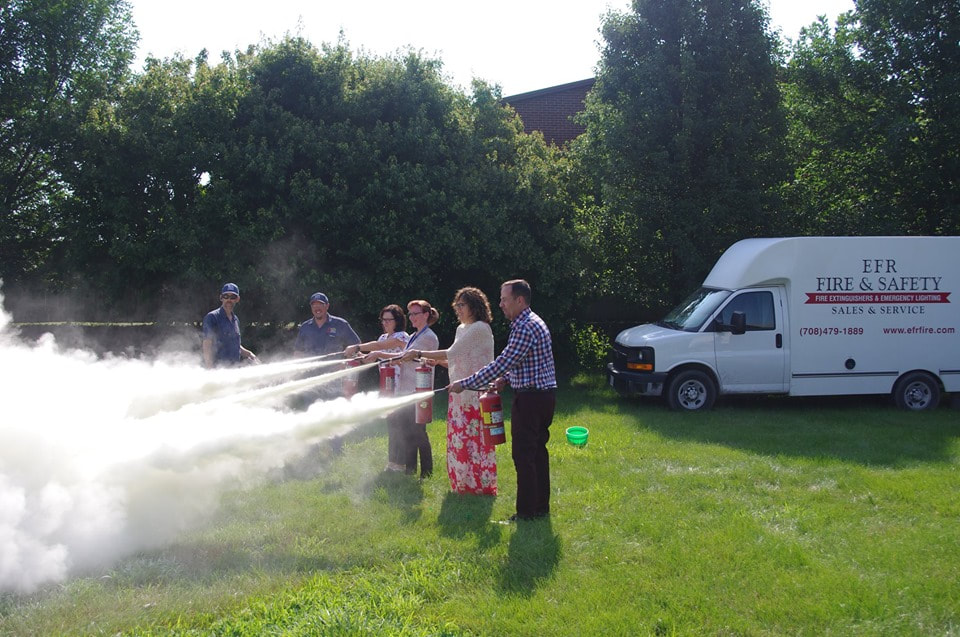
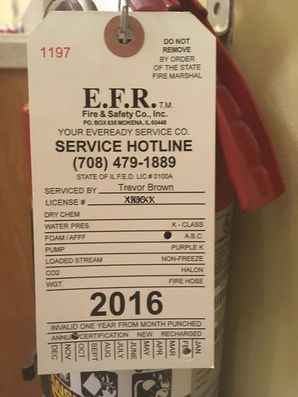
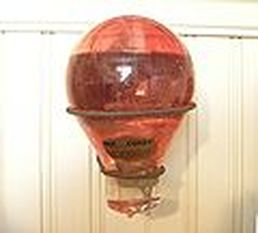
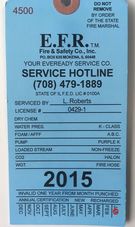
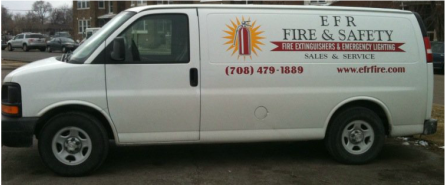
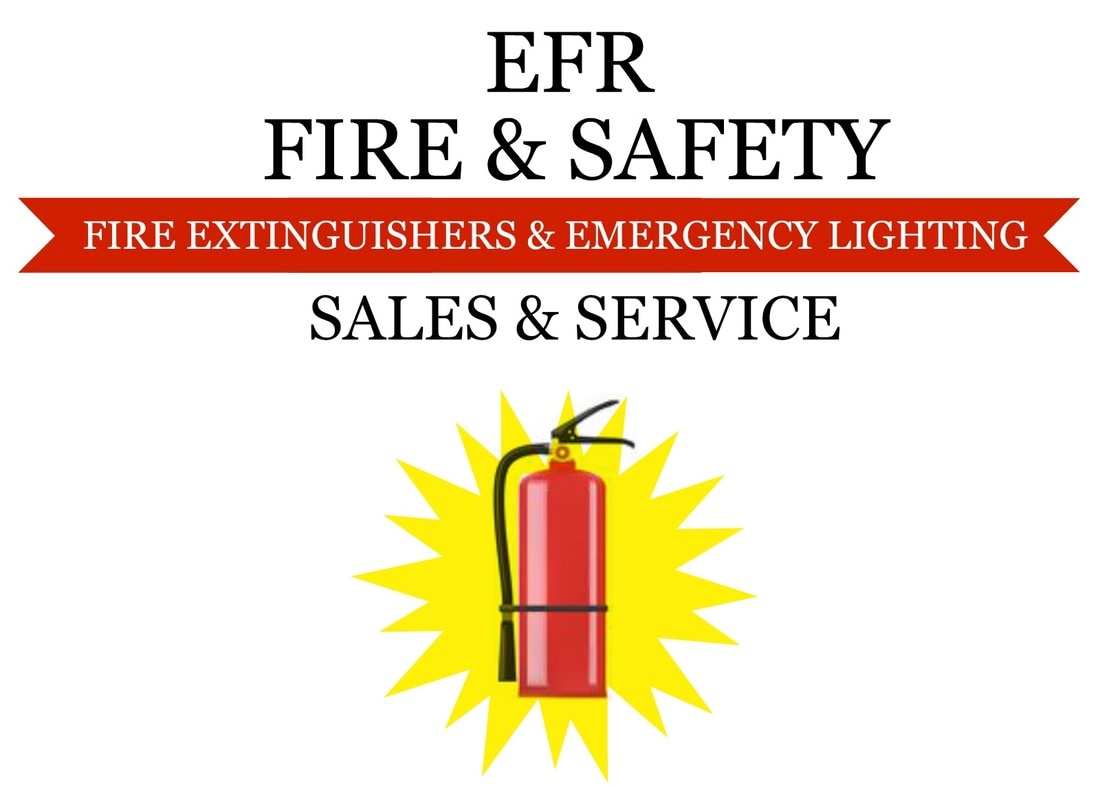
 RSS Feed
RSS Feed
